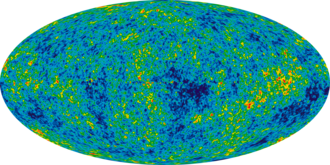Dark matter
Gematria Values
Dark matter is a form of matter that is thought to account for approximately 85% of the matter in the universe and about a quarter of its total energy density. The majority of dark matter is thought to be non-baryonic in nature, possibly being composed of some as-yet undiscovered subatomic particles. Its presence is implied in a variety of astrophysical observations, including gravitational effects that cannot be explained by accepted theories of gravity unless more matter is present than can be seen. For this reason, most experts think dark matter to be abundant in the universe and to have had a substantial influence on its structure and evolution. Dark matter is called "dark" because it does not appear to interact with the electromagnetic force, and therefore it neither emits nor scatters light, making it extremely difficult to detect using usual astronomical equipment. Dark matter in Hebrew is חומר אפל (Khomér Afel). In other languages, it is known as Materia oscura in Spanish, Matière noire in French, and Dunkle Materie in German.
Wikipedia Information
